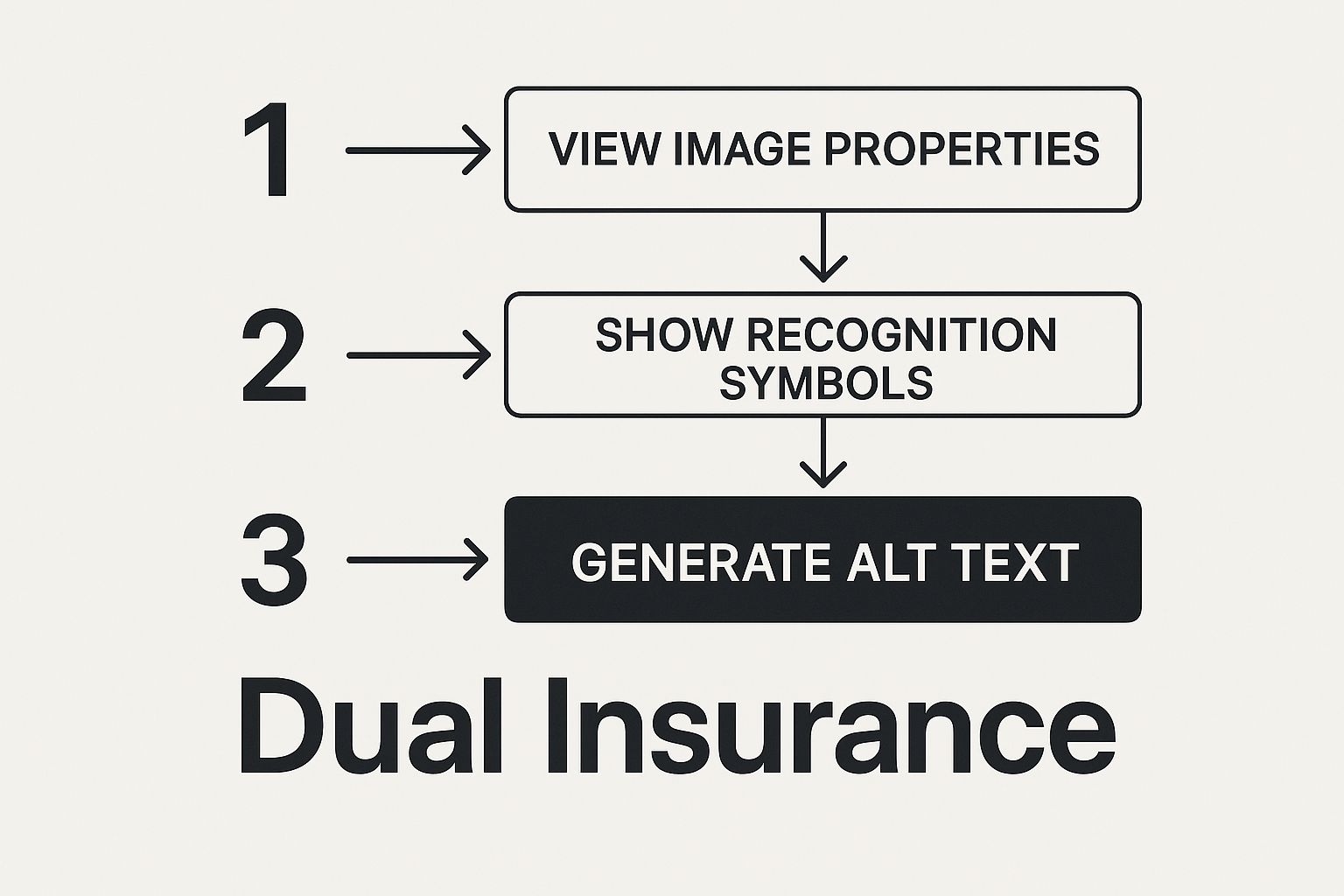Yes, you can have 2 insurance policies. In fact, for high-net-worth individuals, it is often a critical component of a sophisticated financial strategy designed to create an uncompromising layer of security for both personal health and significant assets.
Understanding Dual Insurance: A Strategic Approach
It is entirely permissible—and frequently advisable—to hold two or more insurance policies that cover the same risk. This is known as 'dual insurance.'
However, a foundational principle of insurance, known as 'indemnity,' must be understood. This principle dictates that you cannot be compensated for more than your actual financial loss. If you hold two health insurance policies, for instance, they will coordinate to ensure their combined payout does not exceed your total medical expenses. One cannot profit from an insurable event.
This framework is a global standard. Indeed, mature insurance markets are an indicator of a stable economy. According to the Swiss Re Institute's 2023 sigma report, total global insurance premiums reached USD 6.8 trillion in 2022.
This infographic helps visualize how dual insurance is not about duplicate payments, but about creating multiple, reinforcing layers of financial security.

As illustrated, the objective is to layer coverage strategically to protect high-value assets or eliminate specific gaps, thereby ensuring a comprehensive financial defense.
For quick reference, here are the core principles that govern how dual insurance functions in practice.
Dual Insurance At A Glance: Key Principles
| Principle | Explanation for Policyholders |
|---|---|
| Principle of Indemnity | This is the cornerstone of insurance. You cannot profit from a claim; you can only be "made whole" or restored to your precise financial position before the loss occurred. |
| Coordination of Benefits | Your insurers will communicate to determine which policy pays first (primary) and which pays second (secondary) to cover any remaining costs, preventing overpayment. |
| Contribution | If both policies are deemed primary, the insurers will share the cost of the claim proportionally, according to their respective policy limits. You will still only receive the total value of your loss. |
| Full Disclosure | It is your contractual duty to inform each insurer of the existence of any other relevant policy. Non-disclosure can be viewed as misrepresentation and may jeopardise your claim. |
A clear understanding of these principles is essential to leveraging dual insurance effectively and avoiding complications at the time of a claim.
The Principle of Indemnity, Not Profit
At the heart of this structure is the principle of indemnity. Insurance is a mechanism for risk transfer, not for financial gain. You can only be restored to the financial position you held immediately prior to the incident.
Consider this: if a valuable artwork insured for $1 million is damaged, your combined policies will pay up to a maximum of $1 million for its restoration or replacement, but no more. This prevents the creation of a moral hazard, where insurance could become an incentive for loss.
Grasping this rule is critical. It reframes the concept from "double recovery" to what it truly is: strategic risk management. We analyze these foundational rules in our guide explaining expat medical insurance policy terms.
A Tool for Enhanced Protection
For those with complex international lifestyles, significant assets, or specific health requirements, a single policy may present unacceptable coverage gaps.
Dual insurance is a powerful instrument for closing those gaps and minimising your personal financial exposure. Before structuring such a portfolio, it is beneficial to understand the broader context of healthcare options, including the distinctions between private healthcare and the NHS. This section will clarify how utilising multiple policies can deliver superior financial security and genuine peace of mind.
How Insurers Coordinate Your Benefits
When you have two insurance policies, they do not simply both pay out in full. Insurers employ a standardised protocol known as Coordination of Benefits (COB) to determine the precise order and amount of payment from each policy.
One policy is designated as 'primary,' and the other as 'secondary.' The primary plan is the first to respond to a claim, paying its share according to its terms as if no other insurance existed. Only after the primary plan's obligations are met does the secondary policy contribute to the remaining eligible costs.
This sequence is not arbitrary; you do not select which plan is primary. The order is dictated by established industry rules and the specific language within your policy contracts. It is a structured system designed to ensure clarity and prevent disputes between carriers.
Determining Primary Versus Secondary Coverage
How do insurers establish this hierarchy? The rules are remarkably clear and depend on your specific circumstances.
For example, if you have a health insurance policy through your employer and are also covered as a dependent on your spouse's plan, your own employer's plan is always primary for your personal medical claims. Your spouse’s plan will only act as the secondary payer after your primary plan has fulfilled its coverage obligations. This creates a predictable claims-payment order.
A frequent scenario involves dependent children. If both parents have employer-sponsored health coverage, the industry applies the ‘birthday rule’ to determine which policy is primary for the children. The primary insurer is the one belonging to the parent whose birthday (month and day) occurs first in the calendar year. The year of birth is not a factor.
This is a simple yet effective method for maintaining consistency across the industry.
Coordination in Action: A Real-World Example
Let us examine how this process unfolds with a specific health insurance claim. Assume you undergo a medical procedure with a total cost of $10,000.
-
Primary Insurer Pays: The claim is first submitted to your primary plan. Assume it has a $1,000 deductible and 20% coinsurance. You are responsible for the initial $1,000 deductible. The plan then covers 80% of the remaining $9,000, which amounts to $7,200. This leaves a coinsurance balance of $1,800.
-
Secondary Insurer Steps In: Your out-of-pocket responsibility from the primary plan is now $2,800 (the $1,000 deductible plus the $1,800 coinsurance). You then submit this remaining balance to your secondary insurer.
-
Final Coverage: The secondary plan, subject to its own terms, may cover a significant portion—or potentially all—of that $2,800. It is in this phase that the value of holding two policies becomes evident, creating a powerful financial backstop that can substantially reduce your personal liability.
Strategic Scenarios For Holding Multiple Policies
Understanding the mechanics of dual insurance is one aspect; applying it strategically is another. For individuals with substantial assets, holding multiple policies is not about redundant coverage. It is about constructing a layered, intelligent defense against specific, high-stakes financial risks.
This is a matter of precision, not duplication. The strategy is to identify a potential vulnerability in a primary policy and then deliberately position a second policy to fortify that specific exposure. Consider it less as having two identical policies and more as having a primary shield with a specialised, reinforced plate covering a known weak point.

Asset and Liability Protection
A primary driver for layering policies is the protection of one's net worth from a catastrophic liability claim. A standard auto or homeowner's policy contains liability limits that may be adequate for the average individual but can prove woefully insufficient for someone with a multi-million-dollar estate to protect.
Imagine you are found liable in a serious automobile accident. A court renders a $3 million judgment, but your auto policy's liability limit is capped at $500,000. The remaining $2.5 million must be satisfied from your personal assets—your savings, investment portfolios, and property. This is the precise scenario where a high-limit umbrella policy is not a luxury, but a necessity.
An umbrella policy provides a secondary layer of liability insurance. It remains dormant above your primary auto and home policies, activating only after their limits have been completely exhausted. It is an exceptionally cost-effective method for securing millions in additional liability protection.
Enhanced Healthcare Access
In the context of health coverage, the strategy extends beyond financial liability to ensuring access to premier care and covering specialised medical needs. Your primary health plan might offer excellent routine care but may have a restricted network of specialists or explicitly exclude certain advanced or alternative treatments.
Here, a secondary policy can be transformative. It can be tailored to:
- Broaden Your Network: Grant access to an exclusive network of world-renowned specialists and medical centers of excellence not included in your primary plan.
- Cover Excluded Treatments: Provide coverage for specific procedures, experimental therapies, or wellness services that your main policy does not cover.
- Reduce Out-of-Pocket Maximums: The secondary plan can cover the deductibles and coinsurance left by the primary plan, dramatically lowering your direct financial burden.
Comprehensive Property Coverage
Ownership of property within a shared structure, such as a luxury condominium, presents another classic case for dual policies. The building's master insurance policy covers the physical structure and common areas, but it offers no protection for your personal belongings, high-end interior finishes, or your personal liability for incidents occurring within your unit.
A personal condo policy (an HO-6 policy) works in concert with the master policy. The master policy covers the building from the "walls out," while your personal policy provides coverage from the "walls in." This includes your valuable appliances, custom architectural improvements, and personal property. Together, they form a seamless protective shield without dangerous gaps.
Making a Claim When You Have Two Insurers
When you hold two insurance policies and a claim arises, the process may seem complex. However, it is best viewed as a single process with two distinct stages, governed by sequence and communication.
Your primary insurer is always the first point of contact. Approaching the secondary provider first will result in delays, as its role is contractually defined to begin only after the primary policy has paid its share.

The Three Steps to a Smooth Claim
A successful claims process requires adherence to a clear, three-step sequence. This ensures both insurers receive the necessary information to process your claim efficiently.
-
Notify Both Insurers: At the time of the incident, inform both of your insurance providers immediately. This is not merely good practice; it is a critical step for transparency that establishes a clear record and mitigates potential disputes regarding non-disclosure.
-
File With Your Primary Insurer: Assemble all required documentation and formally submit the complete claim to your primary insurer. They will adjudicate the claim based on your policy's terms and conditions, as if no other policy existed.
-
Engage the Secondary Insurer: Once the primary insurer has settled its portion of the claim, it will issue a document called an Explanation of Benefits (EOB). This document is pivotal. You will submit this EOB, along with the original claim documentation, to your secondary insurer. They will use it to verify what has been paid and cover the remaining eligible costs according to their policy terms.
For international health insurance in particular, pre-authorisation may be required before a medical procedure. It is prudent to familiarise yourself with the mechanics of pre-authorisation and direct settlement agreements to avoid administrative complications.
To illustrate, consider a scenario where a burst pipe causes $150,000 in water damage to your residence. Your primary homeowner's policy has a coverage limit of $100,000.
First, you file with the primary insurer, which pays out its $100,000 limit. You then submit their EOB to your secondary (or umbrella) policy to address the remaining $50,000. This structured process ensures you are made financially whole without liquidating personal assets.
Common Pitfalls To Avoid With Dual Coverage
While strategically powerful, dual coverage requires diligent management to avoid potential complications. The most significant error is the failure to disclose the existence of one policy to the other insurer.
Insurers depend on this information to correctly apply their Coordination of Benefits (COB) rules. Withholding this information can lead to significant claim processing delays or, in a worst-case scenario, an outright denial of the claim on grounds of misrepresentation.
Furthermore, there is an increased administrative burden. You are now responsible for two sets of premiums, two renewal schedules, and two distinct policy documents. This requires a high degree of organisation to prevent an inadvertent policy lapse at a critical moment.
Best Practices For Seamless Dual Coverage
To mitigate these risks, a proactive and methodical approach is essential. View your policies not as two separate contracts, but as a single, integrated protection strategy.
A simple checklist can ensure smooth operation:
- Disclose Proactively: Upon securing both policies, inform each company in writing about the other. Retain copies of these communications for your records as proof of transparency.
- Maintain Organisation: Create a master file or digital calendar detailing all policy numbers, renewal dates, premium due dates, and advisor contact information.
- Clarify the Hierarchy: Review the specific Coordination of Benefits language in each policy. It is imperative to know which plan is primary and which is secondary to ensure correct claims submission.
- Review the Fine Print: Pay meticulous attention to the details of both plans. A thorough understanding helps prevent surprises related to out-of-pocket costs, a topic we detail in our guide on excesses and deductibles.
By managing your dual coverage with this level of diligence, you ensure your layered defense performs exactly as intended when it is most needed.
Questions We Hear All The Time About Dual Insurance
Navigating two insurance policies naturally gives rise to questions. While a sound strategy, the intricacies require clarification. Let us address the most common points of confusion to enable you to manage your coverage with complete confidence.
One of the most frequent questions is whether you can you have 2 insurance policies in the first place. The answer is an unequivocal yes. For high-net-worth individuals, it is often a necessity. The global insurance market's vast premium pool, which has grown past USD 6.8 trillion, has fostered a wide array of specialised products designed to work in tandem. This scale makes layered coverage a more accessible and effective strategy than ever before. You can find more on these global insurance market trends from ey.com.
Key Inquiries Answered
Here are direct answers to the questions we receive most often from clients managing multiple policies. Clarity on these points is crucial for a seamless experience.
-
Do I have to tell my insurance company I have another policy?
Yes, unequivocally. This is a contractual obligation. You must inform both insurers of any other active policy covering the same risk. Failure to disclose can lead to claim delays or an allegation of fraud, as insurers require this information to coordinate benefits correctly. -
Can I choose which insurance policy pays first?
No, the policyholder does not determine the order of payment. This is governed by industry-wide rules and the specific terms within the policy contracts. For health insurance, for instance, a plan under which you are the primary member will almost always pay before a plan under which you are listed as a dependent.
Financial Considerations
The cost-effectiveness of this strategy is as important as the coverage itself.
Is having two policies always more expensive than one high-limit policy? Not necessarily. In some cases, layering two distinct policies—such as a standard auto policy and a separate umbrella policy—can be more economical than sourcing a single auto policy with an exceptionally high liability limit.
This approach also affords greater flexibility to customise your protection precisely. The key is to avoid paying for redundant coverage that provides no additional benefit. An expert advisor should review your policies to ensure they are complementary, rather than duplicative. For more background, you can review some general insurance FAQs which often cover related topics.
At Riviera Expat, we specialise in crafting international medical insurance strategies for high-net-worth professionals. Let our experts provide the clarity and control you need to build a truly robust healthcare safety net. Schedule your complimentary consultation with us today.

